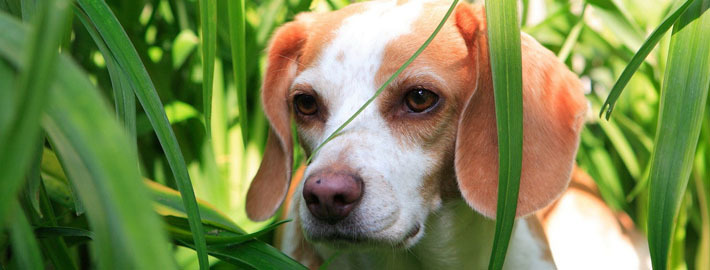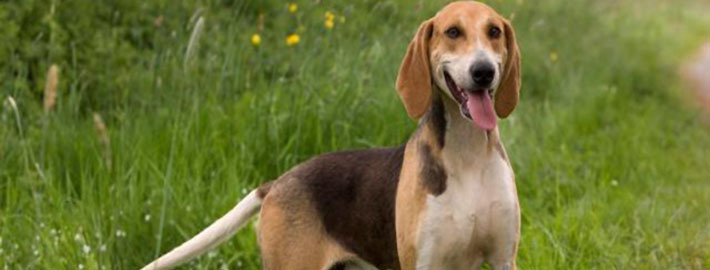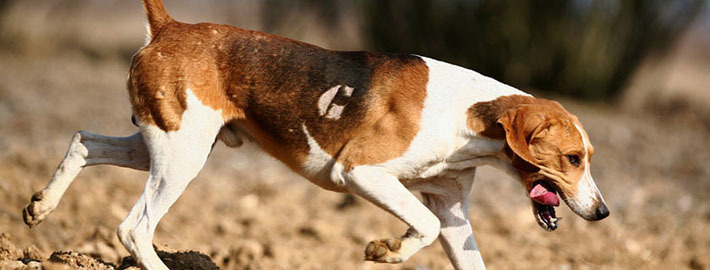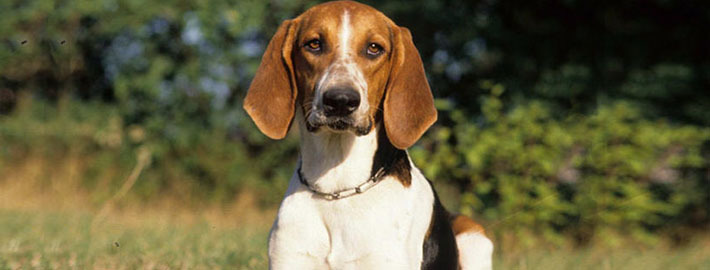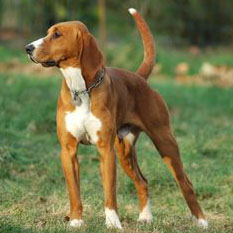What makes the Anglo-Français de Petite Vénerie Unique?
An excellent hunting dog with a long history, the Anglo-Français de Petite Vénerie is nonetheless relatively uncommon outside its homeland. This friendly breed gets along great with both canines and people and is best suited to an active lifestyle in a rural area.
Page Contents
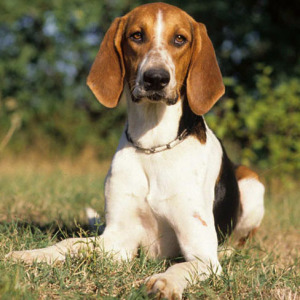
SnapShot
| Size: | Males – 64 to 71 cm (19-22 inches) Females – 61 to 66 cm (18 to 21 inches) |
| Weight: | Males – 15 to 20.5 kg (35 – 45 pounds) Females – 13 to 20 kg (30 – 44 pounds) |
| Origin: | France |
| Life Span: | 13 Years |
| Colour: | White and black, with bright or pale tan markings. Orange and white |
| Litter Size: | 4 to 8 puppies |
Is the Anglo-Français de Petite Vénerie Right For You?
Anglo-Français de Petite Véneries should not be extremely shy or aggressive. In fact, members of this breed generally have sweet dispositions and make good companions. They also get along fine with children. However, very small youngsters should be supervised during playtime to prevent injuries from occurring.
Owners should likewise note that Anglo-Français de Petite Véneries prefer to be kept with another member of their same breed, because having a companion will keep these dogs from becoming nervous or timid around others. Nonetheless, these dogs are not recommended for households with cats or other small pets.
This low maintenance breed does not emit the pungent odor that some hounds do. Anglo-Français de Petite Véneries should only be bathed when it becomes necessary to do so, such as if the dog has wallowed in the mud or encountered a skunk. Owners will want to brush their dog’s coat every so often to remove loose hairs and keep the fur from getting everywhere.
In 5 Words
- Strong
- Dependable
- Loyal
- Loving
- Independent
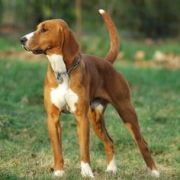
Characteristics
Learn About the Anglo-Français de Petite Vénerie
Description
General Description
The Anglo-Français de Petite Vénerie resembles a taller version of a Beagle. This athletic breed has a chest that is both narrow and deep. They have long, sloping heads that are small when compared to their bodies. Prominent noses and large brown eyes are another feature of this breed. These dogs have medium length tails and long, straight limbs. While members of this breed may look lean, they should be able to perform the duties for which they were bred. These dogs should move with an energetic and fluid gait. Anglo-Français de Petite Vénerie should additionally be “well-formed and solidly built, with no trace of coarseness” according to the United Kennel Club (UKC) standards. The same source further states that these dogs must also have the appearance “of a classic French hound”.
Size
On average, members of this breed weigh between 35 and 45 pounds but it is not uncommon for a working animal to weigh less. Although most Anglo-Francais de Petite Venerie measure approximately 16 and 22 inches in height at their withers, female dogs are generally shorter than their male contemporaries. Members of this breed being shown under UKC guidelines should ideally stand between 19 and 22 inches in height.
Coat
Members of this breed have a short, dense coat that is smooth in texture. Black and white dogs typically have tan markings, but orange and white Anglo-Français de Petite Véneries may also been seen. Albino dogs are forbidden by UKC breed standards.
Short History of the Anglo-Français de Petite Vénerie
Created from crosses between French hounds and English hunting dogs, the Anglo-Français de Petite Vénerie’s ancestors include Poitevins, Beagles, the Petit Gascon-Saintongeois, and other breeds. These dogs can be traced back to the 1500s, where the available types varied based on their original location. Their name can be somewhat misleading as these medium-sized dogs are among the smallest French breeds but they are not diminutive themselves. Anglo-Français de Petite Véneries were bred to hunt small game and that is where the name comes from. Typically Anglo-Français were used either in packs or as individuals to drive game towards the hunters that would be waiting. The breed was known as the Petit Anglo-Français until 1978 when it incurred a name change. These dogs were eventually admitted to the United Kennel Club in 1996.
Temperament
These medium-sized scent hounds should not be extremely shy or aggressive. In fact, members of this breed generally have sweet dispositions and make good companions. Anglo-Francais de Petite Venerie also get along fine with children. However, very small youngsters should be supervised during playtime to prevent injuries from occurring.
Owners should likewise note that Anglo-Français de Petite Véneries prefer to be kept with another member of their same breed, because having a companion will keep these dogs from becoming nervous or timid around others. Nonetheless, these dogs are not recommended for households with cats or other small pets.
Due to their highly energetic natures and stubborn behavior, this breed is not suitable for everyone. Anglo-Francais de Petite Veneries are better suited to being working dog than they are to simply being pets. These dogs do best in a rural or farm setting where they can run about and play if there is not a task for them to perform. They are generally ill-suited to city life because they may bay or howl loudly from time to time. Still, dog owners with a large fenced in yard and no local noise ordinances may be able to manage this breed in towns. After all, Anglo-Français de Petite Véneries are perfectly happy to live outdoors, at least part of the time.
Caring for Your Anglo-Français de Petite Vénerie
General Health
Anglo-Français de Petite Véneries tend to live about 13 years on average and they are not prone to health problems. However, hip and elbow dysplasia, demodectic mange, cataracts, and progressive retinal atrophy have been known to occur from time to time. Any of these dogs that go hunting with their owners will need to be inspected upon their return home for any injuries that may have resulted from their excursion and subsequently treated for any wounds they may have sustained in the line of duty.
Care
Daily
Anglo-Français de Petite Véneries need about an hour of exercise on a daily basis.
Weekly
Brushing a pet’s teeth regularly will keep them from having bad breath or falling prey to periodontal disease. It is a good idea to check the Anglo-Français de Petite Vénerie ears for debris and clean them several times per week, because the breed has a tendency to get ear infections.
Monthly
All dogs should be treated with flea, heartworm, and tick prevention medications. Typically, these products should be administered once a month.
Grooming & Bathing
This low maintenance breed does not emit the pungent odor that some hounds do. Their coats tend to repel both moisture and dirt, making them even easier to groom. Anglo-Français de Petite Véneries should only be bathed when it becomes necessary to do so, such as if the dog has wallowed in the mud or encountered a skunk. Owners will want to brush their dog’s coat every so often to remove loose hairs and keep the fur from getting everywhere.
Exercise & Training
Although they are quite intelligent dogs, Anglo-Français de Petite Véneries are hounds. As a result, they can be incredibly stubborn and training them can take a while. Despite this fact, the dogs respond well to their lessons, especially those that involving hunting. However, members of this breed are more likely than others to wander off and refuse to return when they’re called. Owners should also be aware that, while these dogs are very capable hunters, they are not often instructed in other lines of work. Therefore, the Anglo-Francais de Petite Vénerie’s ability to perform additional tasks remains unknown.

